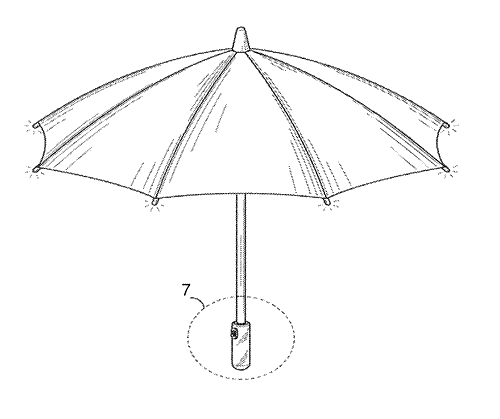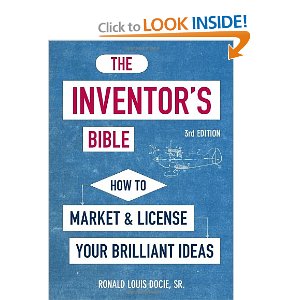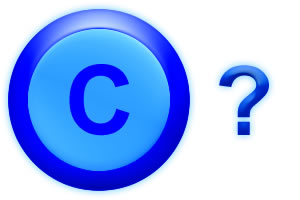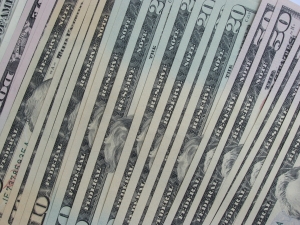 In this article we cover the much asked question of how to patent a design. Design patents are granted for designs that are new, ornamental in nature and applied to an article of manufacture. They cover the aesthetic aspects of an article only, as opposed to utility patents, which cover an article’s function and utility.
In this article we cover the much asked question of how to patent a design. Design patents are granted for designs that are new, ornamental in nature and applied to an article of manufacture. They cover the aesthetic aspects of an article only, as opposed to utility patents, which cover an article’s function and utility.
A design patent will grant you the right to exclude others from making, using or selling your design for a term of 14 years.
To patent a design, you must know and follow the rules and procedures of the Patent and Trademark Office. Though it is not required, it is advised that you employ a registered patent attorney or knowledgable agent to help you obtain the most effective protection for your design.
7 Steps To Patent A Design
If you care to go it alone, you may follow the steps below as a guideline:
Step 1
Filing a provisional patent application is the first step to patent a design. A provisional patent application will give you twelve months protection for your design while you complete the application for the full patent.
Step 2
Perform a patent search. The law requires that a design be new and innovative. The purpose of the patent search is make sure that your design is in fact new and that it has not already been patented. You may perform a patent search yourself through the United States Patent and Trademark Office (USPTO) website, but you are advised to hire an experienced and competent attorney or agent to perform the search for you.
Step 3
Prepare drawings of your design. The drawings must depict your design from all perspectives and must be in black and white only, unless you file a formal petition to submit color drawing or photographs. These drawing are extremely important to your application and should be prepared by a draftsperson who specializes in preparing patent drawings.
Step 4
Write your application. The written part of the patent application must include a general description of your design, references to any known “prior art” found in the patent search and a “claims section” which includes the drawings and a single “claim”, which describes in detail all aspects of your design. See the USPTO website for the full list of documents and statements needed with your application in order to write the application to patent a design.
Step 5
File your application with the USPTO. The completed application must be filed along with the appropriate filing, examination and search fees. You may file you application via postal mail or electronically through the USPTO’s electronic file system (EFS). Once your application and all fees are received, you will receive an application number and a filing date. Your application will then be reviewed in the order of your filing date.
Step 6
Re-submit your revised or amended application. It is highly likely that your application will be rejected the first time you submit it. This is not uncommon. You will, however, receive comments or recommendations from the patent examiner to help you make the necessary revision to your application. Once these changes are made, resubmit and continue this processing of revisions until your application is approved.
Step 7
Receive your patent. Once your application has been approved and all objections overcome, you will receive a Notice of Allowance and Fee(s) due. This notice informs you that your application for a design patent has been allowed and that you are able to pay the required issue fee and be issued your patent.
Patent and Trademark Office
Again, in order to patent a design you must follow the rules and procedures required by the Patent and Trademark Office. These rules, along with of the required forms, can be found on the USPTO website. You may complete the documents and file your application yourself.
However, there is no guarantee that the patent you ultimately obtain by yourself will be adequate enough to prevent others from copying your design. For this reason, you would be well advised to employ a registered patent attorney or agent to help you receive the most effective protection for your design.
Good luck, we hope you’ve now got some practical know-how to patent a design.




 In this article we talk about how to copyright an idea. Have you a written a new ebook that you would like to distribute or a new song that you would like to publish? Do you have an idea for a movie script that you would like to shop around? Have you developed a new app for smart-phones that you would like to sell online?
In this article we talk about how to copyright an idea. Have you a written a new ebook that you would like to distribute or a new song that you would like to publish? Do you have an idea for a movie script that you would like to shop around? Have you developed a new app for smart-phones that you would like to sell online?
 In this article we provide a brief discussion of patent licensing as an attractive way for inventors to monetize their patents.
In this article we provide a brief discussion of patent licensing as an attractive way for inventors to monetize their patents.



 Surely one day they’re going to invent a way to heal cuts and wounds significantly faster. Some kind of material that you just rub onto a wound (or a super-plaster of sorts), and within minutes the wound is healed and there are no scars.
Surely one day they’re going to invent a way to heal cuts and wounds significantly faster. Some kind of material that you just rub onto a wound (or a super-plaster of sorts), and within minutes the wound is healed and there are no scars. Here’s one that we all can hopefully agree upon. We’re living in the twenty-first century, and yet there is still no cure for the common cold. A cold brings you down: it makes you snivel and sniff and all congested for days.
Here’s one that we all can hopefully agree upon. We’re living in the twenty-first century, and yet there is still no cure for the common cold. A cold brings you down: it makes you snivel and sniff and all congested for days. So you’re chewing your gum. Chewing and chewing. You’re really enjoying the flavor: it’s fresh, pungent, rich and sometimes even a bit spicy. And after a few minutes it’s gone, evaporated. You might as well be chewing on a piece of rubber; it tastes just the same. That’s why we say that someone should invent infinitely flavorsome chewing gum.
So you’re chewing your gum. Chewing and chewing. You’re really enjoying the flavor: it’s fresh, pungent, rich and sometimes even a bit spicy. And after a few minutes it’s gone, evaporated. You might as well be chewing on a piece of rubber; it tastes just the same. That’s why we say that someone should invent infinitely flavorsome chewing gum. One of the most painful things in the world is your mobile phone going dead. Especially when you’re out, with no access to a charger, and you need to receive a text or make a phone call. And smartphones are particularly bad at battery life. The problem is the very concept of the battery that requires an external electric power source to charge it.
One of the most painful things in the world is your mobile phone going dead. Especially when you’re out, with no access to a charger, and you need to receive a text or make a phone call. And smartphones are particularly bad at battery life. The problem is the very concept of the battery that requires an external electric power source to charge it. Not sure how well this one would fly; some people love bragging about how drunk they got the night before. But others would love to enjoy alcohol without feeling incredibly hung-over the next day.
Not sure how well this one would fly; some people love bragging about how drunk they got the night before. But others would love to enjoy alcohol without feeling incredibly hung-over the next day. Ok I’m not sure how possible this is. But that’s the whole point of being inventive and creative: it’s to go beyond the possible. So this idea is a means to prevent the need to have a cumbersome and heavy oxygen tank with you when you dive in the ocean. Besides that, there’s always the worry that it might run out.
Ok I’m not sure how possible this is. But that’s the whole point of being inventive and creative: it’s to go beyond the possible. So this idea is a means to prevent the need to have a cumbersome and heavy oxygen tank with you when you dive in the ocean. Besides that, there’s always the worry that it might run out.